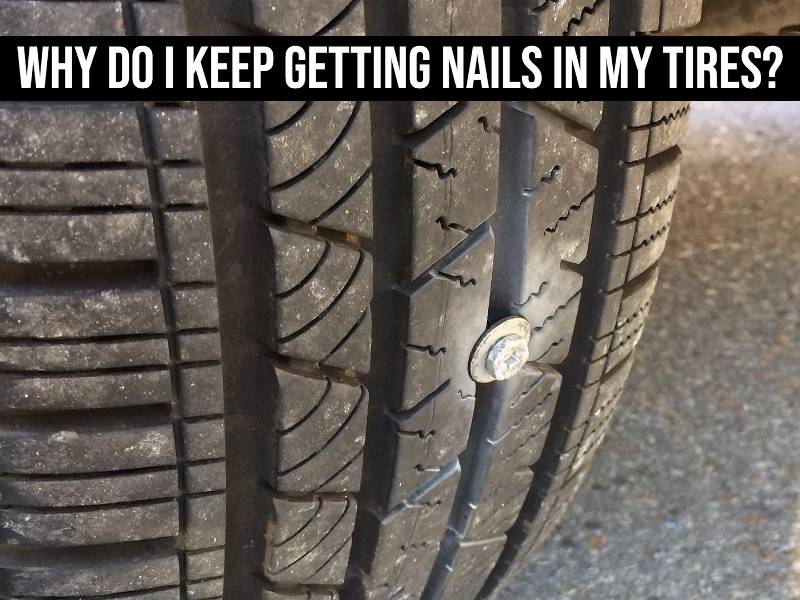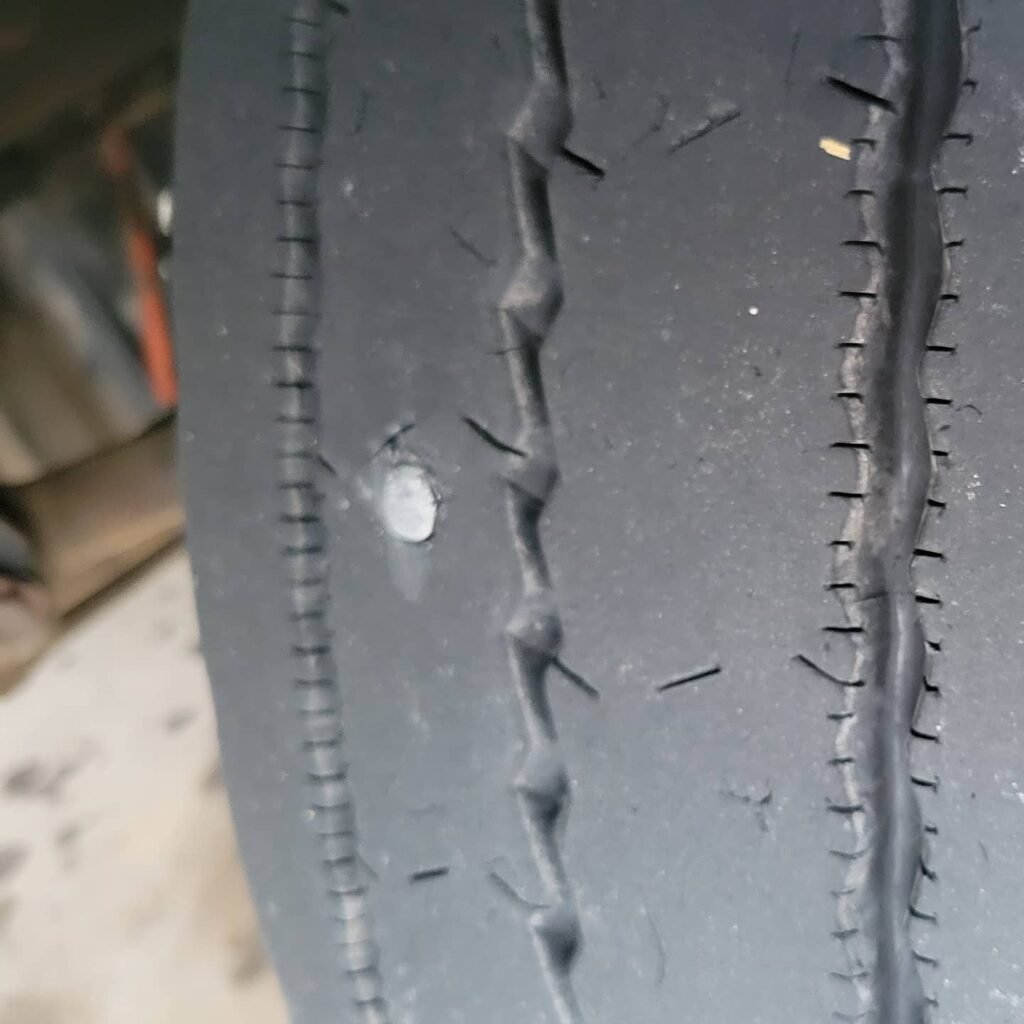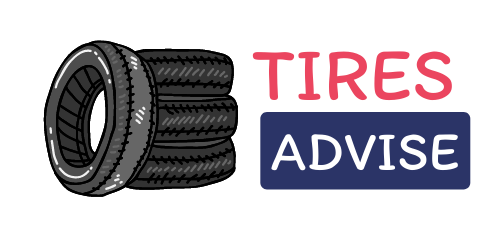
Have you ever been driving and heard the tell-tale sound of a nail entering your tire? It’s a sound that’s all too familiar to many of us, but why is it that our tires are so prone to nails and other sharp objects?
Nails in tires can be caused by a variety of factors, such as driving over construction sites, parking lots, or roads that are used by contractors and delivery companies. In addition, nails can fall off of other vehicles and be thrown onto the road. They can also be intentionally thrown onto the road by vandals.
In this article, we’ll explore the possible reasons why you keep encountering nails in your tires and how to prevent it from happening in the future. Ready to get to the bottom of this? Let’s get started!
Why Do I Keep Getting Nails In My Tires? Learn The Root Cause!

Recent research has revealed that, in the United States, approximately 7 tires become punctured each second, leading to an annual total of 220 million flat tires. Additionally, it is estimated that the average driver will experience up to 5 flat tires over the course of their lifetime.
There are many potential reasons why one might keep getting nails in their tires. It is important to identify the root cause to ensure that the problem is solved in the long term.
Driving style
Your driving style may also contribute to the problem of getting nails in your tires. If you drive hard and fast, you are more likely to encounter debris on the road that can puncture your tires. This is because you may not have enough time to react to objects on the road or avoid them altogether.
Flat spotting
Flatspotting occurs when a tire is exposed to significantly higher temperatures than it should be. This can cause the tire to heat up, causing the rubber to become soft and vulnerable to nails.
Bad Road Conditions
If you take those bumpy roads, you could find yourself with nails in your tires. Poor-quality roads can often be littered with nails, screws, and other pieces of junk that might end up embedded in your tire’s treads.
Poor Alignment
When a vehicle is not properly aligned, it causes the tires to wear unevenly. This can create weak spots in the tire that are more prone to punctures from nails or other objects. Additionally, if the alignment is off, the vehicle is more likely to veer off to the side when driving, which could cause it to drive over nail-laden areas.
Driving Over Nail-Laden Areas
Certain areas are more prone to have nails and other sharp objects on the ground. Construction sites, old garages, parking lots, and other places where there is a lot of foot traffic can often contain nails. It is essential to be aware of these places when driving and take extra precautions to avoid them.
Worn-out tires
Over time, tires will naturally wear out, making them more susceptible to damage. This is especially true for tires that have been on the car for a long time. When the rubber is worn out, it will be easier for a nail or other sharp object to penetrate the tire.
Vandalism
It is a sad reality that in some cases, people choose to recklessly and maliciously throw nails onto the roads and other areas. It can cause severe problems for unsuspecting drivers, as it is impossible to predict where these nails could be located. The dangers of nails in tires are very real, as sharp metal objects can cause tires to puncture and burst, leaving drivers stranded and at risk of further safety hazards.
Poor Tire Maintenance
Poor tire maintenance is one of the main causes of nails entering your tires. If your tires are not rotated and balanced regularly, they may become more prone to punctures. In addition, if the tires are not inflated to the correct pressure, it increases the risk of nails entering the tires.
Low Tire Pressure
Low tire pressure is one of the main causes of nails entering the tires. If the tires are not inflated to the correct pressure, they are more likely to come into contact with nails and other debris, leading to punctures.
Hardwood Planks
Hardwood planks are often used in outdoor and construction sites, and nails can become lodged in the planks and enter your tires if you drive over them. As hardwood planks are often used for scaffolding, there is an increased risk of nails entering your tires.
How Should You Deal with a Nail in a Tire?
Finding a nail in your tire can be frustrating, but it’s not an uncommon occurrence. The good news is that you can usually repair the tire yourself using a tire repair kit, which typically includes a plug, rubber cement, and a tool for inserting the plug.
Here are the step-by-step instructions on what to do if you find a nail in your tire:
1. Assess the damage: Before you start the repair process, you should examine the nail and the surrounding area to determine the extent of the damage. If the nail is located on the sidewall of the tire, or if the puncture is larger than ¼ inch, you should not attempt to repair the tire yourself. In these cases, you will need to take your tire to a professional for repair or replacement.
2. Remove the nail: If the puncture is small enough to repair, you will need to remove the nail. Use pliers to grip the nail firmly and pull it straight out of the tire. Be careful not to damage the tire or widen the hole.
3. Prepare the plug: Take the plug out of the kit and coat it with rubber cement. This will help the plug adhere to the tire and create an airtight seal.
4. Insert the plug: Take the tool from the kit and try not to touch the middle part that’s going to be in the tire. Insert the plug into the tool and push it right in through the hole. Push it down just over halfway, about 3/4 of the way down. Push that down to where it’s got two little tabs sticking out. Now pull that tool real quick straight up and it should leave that plug right where it sits. The rubber cement will squirt all around and seal around where it went in.
5. Trim the excess: After the plug is inserted, you should trim the excess plug with a pair of scissors or a razor blade. Cut right even with that tire tread just a little hair above it.
6. Test the repair: Once you’ve completed the repair, spray some soapy water into the tire to check if there are any leaks. If you see bubbles forming around the plug, then you may need to insert another plug or take the tire to a professional.
If you see no bubbles forming, then check the tire pressure, and make sure it is at the recommended level for your vehicle.
8. Drive cautiously: Finally, it’s important to remember that a tire repaired with a plug is not as strong as a new tire, so it’s important to drive cautiously until you can get the tire professionally repaired or replaced.
How do you prevent nails from getting in Tyres?
In order to ensure your tires remain safe and unencumbered by foreign objects, preventive measures must be taken to keep nails from lodging in them. In light of this, these steps provide a comprehensive guide on how to safeguard your tires from nail intrusion.
1. Check Tire Pressure Regularly
Keeping your tires inflated properly is the best way to deter nails from infiltrating the treads. Taking time to routinely check tire pressure can help to prevent any pressure drops that could lead to tires becoming loose and vulnerable to sharp objects. Doing this on a regular basis is your best bet for keeping nails at bay.
2. Use Nail-Proof or puncture proof Tires
If you drive in areas where there is a lot of construction or debris, you may want to consider using nail-proof or puncture-proof tires. These wheels are designed to provide better protection against punctures and are made up of stronger materials that make it difficult for nails to penetrate the treads.
3. Use tire shields
Tire shields are a type of protective covering that is made to fit over the tire to protect it from any screws or other sharp objects. Make sure to check the size of the tire shields to ensure that they fit properly and securely.
4. Change Your Tyres When worn out
As time passes, your tires will become weaker and more vulnerable to punctures. Ensure that you switch them out frequently and take a look at them to make sure they’re not showing any signs of wear or harm.
5. Check the ground
Before you drive off, make sure to check the ground for any sharp objects that may have been left behind by someone else. This includes nails, screws, glass, and other sharp objects.
6. Drive Carefully
Be mindful of where you drive and be mindful of any sharp objects that could puncture your tires. Avoid driving on roads that have large amounts of debris or uneven surfaces that could contain nails.
Final Verdict
From the above discussion, it is evident that there are several possible causes of a person getting nails in their tires. While it is difficult to determine the exact cause, the most likely causes include improper disposal of nails and the presence of a nail-filled object on the road.
Regardless of the cause, if you notice nails in your tires, it is important to have them removed and replaced as soon as possible to avoid potential damage to your vehicle and your safety.
Stay Safe!
FAQs
How long can I drive with a nail in my tire?
If you have a nail in your tire, it is not recommended to drive more than 2 miles, and that should only be done in emergencies. This is because driving with a nail in your tire can cause the tire to slowly lose air pressure, creating an increased risk of tire failure. If you must drive a short distance with a nail in your tire, drive cautiously and slowly. After driving, have your tire repaired or replaced as soon as possible.
How do you know if someone has put a nail in your tire?
If you suspect that someone has put a nail in your tire, you can check by feeling the tread of the tire for any bumps or protrusions. If you find a nail, then you may need to patch or replace the tire. You can also use a tire pressure gauge to check the air pressure in the tire. If the tire pressure is lower than normal, this may also be a sign that you have a nail in the tire.
Is It Safe to Remove the Tire’s Nail?
No, it is not safe to remove the tire’s nail. If you remove the nail, it can be difficult to plug the puncture hole, and the tire may still become damaged. Additionally, when you remove the nail, it can cause the tire to lose some of its air pressure, which could further damage the tire. It is always best to have a professional assess any damage to a tire and make any necessary repairs.
How long does a nail tire repair last?
The longevity of a nail tire repair depends on a few factors, such as the quality of the repair and the amount of driving you to do. Generally, a nail tire repair can last anywhere from seven to ten years. However, the longer the repair lasts, the more likely it is that the tire will eventually need to be replaced due to the weakened structural integrity caused by the nail.
